Have you noticed some strange white spots on the leaves of your cucumber plants? A common problem faced by many gardeners, these white spots could be a sign of trouble for your beloved cucumber crop. The good news is that there are ways to diagnose and address this problem, allowing your cucumbers to thrive! This blog post will address the possible causes of white spots on your cucumber leaves and provide methods on how to eliminate them using common household items. We will also cover the necessary steps for preventing such problems in the future with expert workflow advice. Read on to find out more about how to keep your cucumbers healthy and robust!
What Causes White Spots on Cucumber Leaves?
Environmental Factors
White spots on cucumber leaves can be caused by several environmental factors, including extreme temperatures (either too hot or too cold), low humidity levels, and lack of sufficient sunlight.
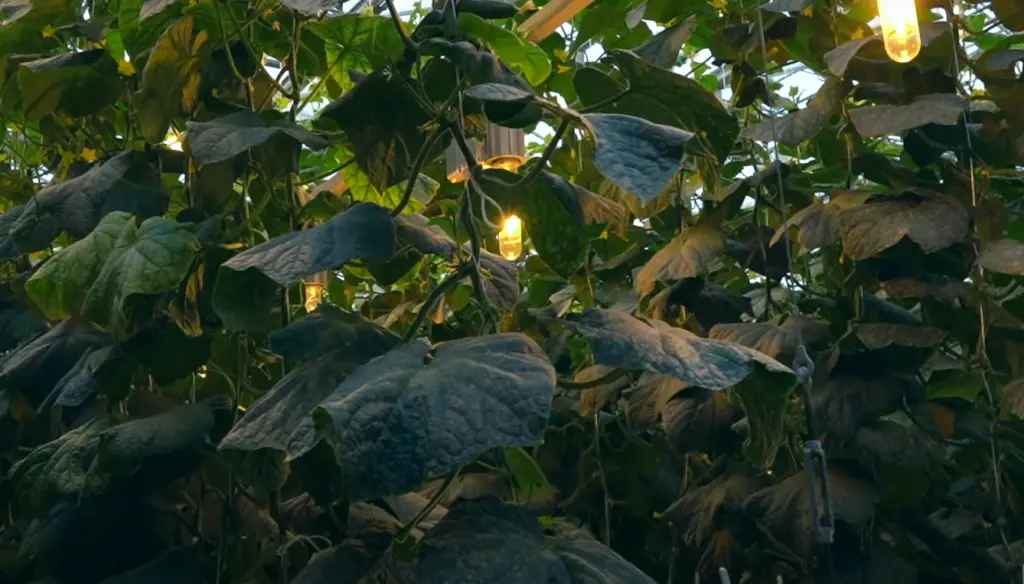
All of these can lead to a decrease in the plant’s health, leading to other issues such as wilting or discoloration of the leaves. [1]
Bacterial and Fungal Diseases
White spots can also be caused by various types of bacterial and fungal diseases, such as powdery mildew or downy mildew. These pathogens are spread through spores that are carried by wind or splashing rainwater, and they thrive in warm, humid conditions. To prevent these diseases from becoming a problem, it’s important to keep the cucumber leaves dry and well-ventilated so that the spores don’t have an opportunity to take hold.
Insect Damage
Insects such as aphids, spider mites, or mealybugs can also cause white spots on cucumber leaves. These insects feed on the sap in the plant tissue, which can lead to discoloration and distress among your plants. To prevent insect damage, it’s important to practice good garden hygiene by removing damaged or infested leaves and fruits from the area as soon as possible.
Nutrient Deficiencies
One possible cause of white spots on cucumber leaves is the deficiency of essential nutrients like nitrogen or potassium in the soil. If your soil is deficient in any of these elements, you may need to supplement it with additional fertilizers or compost to ensure a healthy crop. Additionally, keep an eye out for signs of nutrient deficiencies—such as yellowing leaves—so that you can address them quickly before they lead to worse problems.
Preventing White Spots on Cucumber Leaves
Ensure Appropriate Growing Conditions
In order to prevent the appearance of white spots on cucumber leaves, it is important to ensure that the cucumbers are provided with appropriate growing conditions. This includes making sure they get enough light and water, as well as ensuring the temperature and humidity levels remain in an optimal range for plant growth to address it.
Use Disease-Resistant Varieties of Cucumbers
It is important to use disease-resistant varieties of cucumbers in order to reduce the chances of white spots appearing on cucumber leaves. These varieties are bred specifically to be tolerant of common plant diseases and have a higher chance of being able to resist them. [2]
Avoid Overcrowding Plantings
When planting cucumbers, it is important not to overcrowd the planting area as this can promote disease and increase the chances for white spots to appear on cucumber leaves.
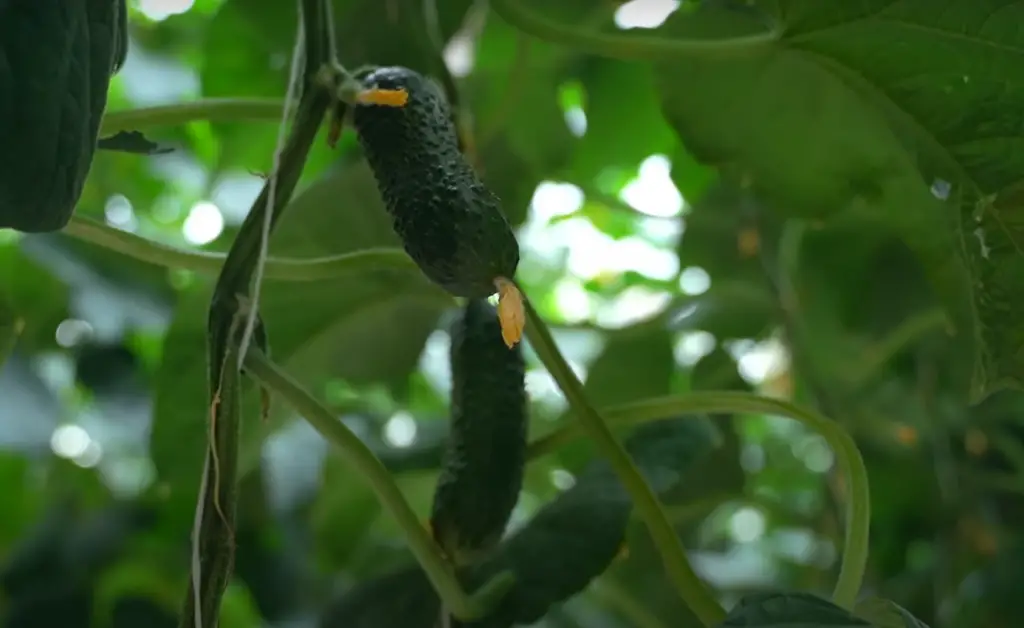
It may also be beneficial to provide adequate spacing between rows in order to ensure that there is sufficient air circulation around the plants.
Remove Diseased Plants Immediately
Finally, if any plants do become diseased with white spots on their leaves it is important to remove them immediately in order to reduce the risk of the disease spreading to other plants. It is also important to dispose of the diseased plant material carefully and away from any healthy plants.
By following these preventative steps it is possible to reduce the chances of white spots appearing on cucumber leaves, ensuring a better harvest for gardeners.
Treating White Spots on Cucumber Leaves
Chemical Treatment Options for Spot Blight, Angular Leaf Spot and Powdery Mildew
Fungicides
Fungicides are the most common chemical treatment option for spot blight, angular leaf spot and powdery mildew on cucumber leaves. These products typically contain copper, sulfur or a combination of both as active ingredients.
Insecticides
If there is an infestation of aphids, whiteflies or other sap-sucking insects present in addition to any of the diseases mentioned above, insecticides can be used in conjunction with fungicide treatments to reduce pest activities that may increase inoculum levels (spores) on plant surfaces. Commonly used chemicals include neem oil, pyrethrins and spinosad.
Copper Sulfate and Bordeaux Mixture
Copper sulfate and Bordeaux mixture are frequently used in organic gardening to control spot blight, angular leaf spot and powdery mildew. Both of these products contain copper as an active ingredient, but Bordeaux mixture adds a lime base to provide additional protection against infection.
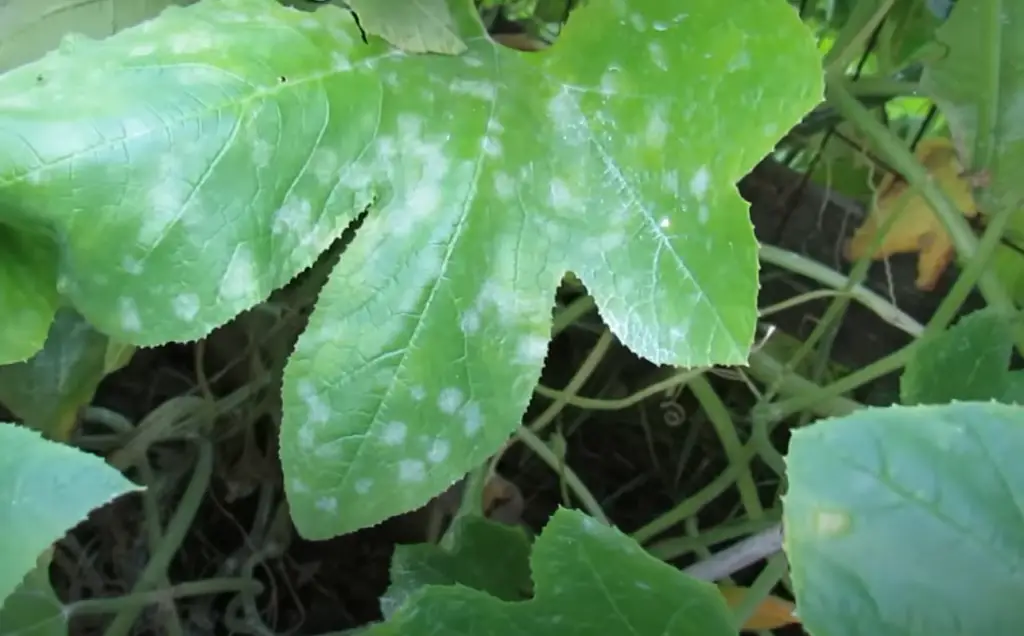
This combination should be applied at the onset of symptoms or when conditions become favorable for disease development. Re-application may be necessary every 7-14 days depending on environmental factors such as humidity and temperature. [3]
Biological Control Agents
Biological control agents can also be used to manage spot blight, angular leaf spot and powdery mildew on cucumber plants. These beneficial insects include predatory mites (Amblyseius spp.), ladybugs (Hippodamia convergens) and lacewings (Chrysoperla spp.). These insects feed on the fungal pathogen responsible for causing these diseases, reducing disease levels over time. Additionally, they can help reduce pest pressure by feeding on harmful sap-sucking insects such as aphids and whiteflies. These beneficial insects can be purchased from garden centers or online retailers and released into your garden at the first sign of disease development.
Biological Treatment Options for Spot Blight, Angular Leaf Spot and Powdery Mildew
Bacillus Subtilis
It is a bacteria that can be used to control certain diseases, including Spot Blight, Angular Leaf Spot and Powdery Mildew. The bacteria works by competing with the pathogens for resources like food and space in the soil. Additionally, Bacillus Subtilis produces substances that can help eradicate fungal or bacterial infections on cucumber plants. To use this treatment method effectively, it should be applied at the first sign of disease (i.e., early leaf spotting) and reapplied every two weeks during periods of high relative humidity or when moisture is present on plant surfaces.
As an alternative to Bacillus Subtilis, many gardeners also choose to use compost tea as a biological method of controlling spot blight, angular leaf spot and powdery mildew on cucumber plants. Compost tea is made by soaking compost in water for several days and then straining the mixture to make a liquid concentrate, which can be applied directly to the affected parts of the plant. Not only does this method provide a natural source of nutrition for the cucumber plant, but it also helps to suppress fungal and bacterial diseases.
Trichoderma harzianum
Another effective biological control is Trichoderma harzianum, a naturally occurring soil fungus. This fungus works to prevent the growth of other fungi on cucumber plants by secreting enzymes that break down fungal cell walls and inhibit their germination. When using this method, it’s important to apply the fungus directly to the affected parts of the plant. [4]
Neem Oil
Lastly, neem oil is an excellent option for controlling spot blight, angular leaf spot and powdery mildew on cucumber leaves.
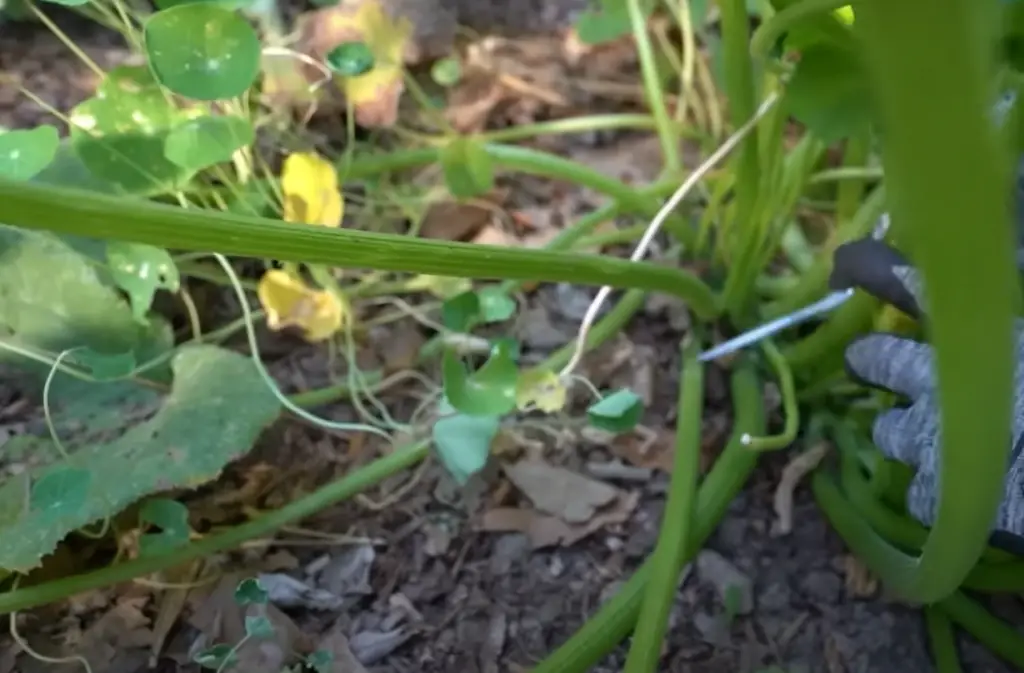
Neem oil is derived from the fruits and seeds of the neem tree (Azadirachta indica) and has antifungal properties which help to suppress fungal infections in cucumbers. To apply neem oil, mix it with water and spray the affected parts of the plant thoroughly.
How Often Should You Water Cucumbers?
Cucumbers are thirsty plants, so proper watering is key to their success. In general, you should water cucumbers once a week or more often if the soil is dry. Try to keep the soil slightly moist and never allow it to become soggy. Over-watering can lead to root rot and other problems that can cause white spots on cucumber leaves.
If possible, deliver water directly at the base of the plant and not from overhead to reduce potential disease issues due to excess moisture. When temperatures get hot, increase watering frequency accordingly for optimal growth and health of your cucumber plants.Do Cucumbers Need Direct Sunlight?
Cucumbers require full sun for optimal growth and yields. Six to eight hours of direct sunlight per day is ideal. When planting, choose a location that gets plenty of sun throughout the day. If you’re growing in containers, make sure they are placed outdoors in an area with good drainage and plenty of sun exposure. Insufficient sunlight can lead to stunted plant growth and decreased yields, so be sure you provide your plants with ample amounts of direct light each day.
If white spots on cucumber leaves are caused by environmental factors such as insufficient light or too much fertilizer, then increasing the amount of sunlight may help improve their condition. Additionally, proper fertilization (though not over-fertilizing) can help balance the nutrients that cucumbers need. If your cucumber plants are not receiving enough sunlight, consider supplementing with a grow light to ensure they get enough rays and remain healthy.
How Do I Know If My Cucumbers Need More Water?
If you notice the leaves of your cucumber plants wilting, this could be an indication that they need more water. If the leaves are dry and drooping, it’s a sure sign that they are dehydrated, and you should give them a good watering. Other signs include stunted or slow growth as well as discolored fruits or flowers on the plant. Additionally, if there is little to no soil moisture between 1-2 inches deep, then it may be time to add more water. To check the moisture level of the soil around your cucumbers, use your finger to test for dampness before deciding whether or not to add more water. [5]
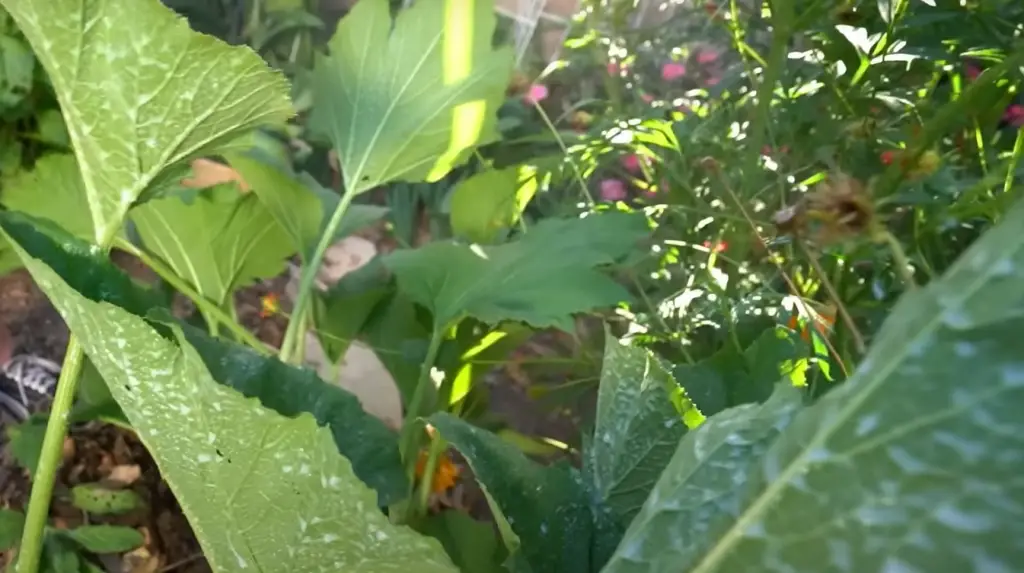
Finally, keep in mind that too much watering can also be a problem. Cucumbers like well-draining soil, so if you are over watering, the excess water will not be able to escape and the roots may end up being deprived of oxygen. In this case, you should adjust your watering schedule by giving the plants more time to dry out between waters. If you notice any of these signs, it’s best to take action right away in order to keep your cucumber plants healthy!
Can You Leave Cucumbers In Water Overnight?
Yes, you can leave cucumbers in water overnight, as long as you take certain precautions. If the cucumber skin is damaged or if the cucumber has been exposed to contaminated water, it is not safe to keep them submerged for extended periods of time. To ensure safety when soaking cucumbers overnight, make sure to use clean and filtered water and don’t let them soak for longer than 12 hours. Additionally, it’s important to keep the temperature of the water consistent throughout the night. Cucumbers are very sensitive to temperature changes which can cause spoilage and damage their outer layer. When done correctly, soaking cucumbers in cool (but not cold) water will help keep them fresh and crisp until you’re ready to consume them.
It’s important to note that soaking cucumbers overnight will not prevent white spots from appearing on the leaves of your cucumber plants. If you’re noticing white spots on your cucumbers, it’s likely due to powdery mildew or other fungal diseases. To treat this issue, make sure to take steps to prevent further spread of the disease such as removing affected leaves and avoiding excess water and humidity near the plants. Additionally, applying fungicides may help control the spread of the fungus.
How Many Cucumbers Grow Per Plant?
The number of cucumbers a single plant can produce depends on the variety and conditions. Generally, one plant will grow one to two cucumbers. Some varieties may produce more than that, while some may be indeterminate (never-ending) vines with an abundance of cucumbers. It’s important to space out your plants correctly in order for them to receive enough light and air circulation so they can thrive and reach their full potential. This will help guarantee the best yield of healthy cucumbers per plant.
It’s also important to monitor the growth of your cucumber plants closely and take note of any changes in their leaves or environment, as this could be an indication of an underlying disease or pest problem developing. With regular monitoring and preventive action, you can help save your cucumber plants from disease or pests and ensure a plentiful harvest of healthy cucumbers. One symptom to look out for is white spots on the leaves. This could be a sign of powdery mildew, which requires immediate action. [6]
What Is The Best Feed For Cucumber Plants?
Cucumbers are heavy feeders, meaning they require a lot of nutrients to grow healthy and produce an abundant crop. The best way to ensure your cucumber plants get the nutrition they need is to fertilize regularly throughout the growing season.
Depending on your soil type and gardening conditions you may also want to supplement with additional micronutrients like magnesium, iron, calcium, sulfur, boron, manganese etc. Additionally it is beneficial (but not necessary) to apply organic matter such as compost or aged manure as this helps improve soil structure and stimulate beneficial organisms in the soil.
With a good fertilization plan, you can help your cucumber plants stay healthy, strong, and resistant to pests and diseases.
FAQ
How do you treat white spots on cucumber leaves?
The best way to treat white spots on cucumber leaves is to remove and discard affected leaves. To reduce the chances of reinfection, it is recommended to use a fungicide at the base of the plant and around its perimeter. Make sure to thoroughly clean tools after pruning or harvesting in order to prevent further spread of disease.
What causes white spots on cucumber leaves?
White spots on cucumber leaves are usually caused by fungi, such as powdery mildew or anthracnose. These fungi thrive in warm, humid conditions so they can spread easily if not controlled. Factors like poor air circulation or overcrowded plants also increase the risk of infection.
Can I still eat infected cucumbers?
If the cucumber is still in good condition and has not been exposed to too much of the fungus, it may be safe to eat. However, it is advisable to cut off any affected parts before consuming, as eating contaminated produce can lead to stomach upset or other health issues.
What precautions can I take to avoid white spots on cucumbers?
To help prevent white spots on cucumbers, try planting resistant varieties when available. It’s also important to practice good garden hygiene such as cleaning tools after use and rotating crops in order to reduce chances of reinfection. Good air circulation and adequate spacing between plants are also essential for reducing disease spread. Finally, fungicide applications are recommended if symptoms persist.
What is a natural remedy for white fungus on leaves?
The most common cause of white spots on cucumber leaves is powdery mildew, a fungal disease. The best natural remedy for the problem is to mix 1 tablespoon of baking soda with 2 tablespoons of vegetable oil and 1 gallon of water. Spray this mixture over the cucumbers every 7-10 days during warm weather and after rain or irrigation. This concoction will create an alkaline environment that is inhospitable to the fungus spores. Additionally, ensuring adequate air circulation around your cucumber plants will help in preventing and controlling powdery mildew growth. Prune away any overcrowded foliage and avoid planting in overly dense gardens that lack airflow as this can increase susceptibility to diseases like powdery mildew. Finally, using neem oil as a preventative measure instead of waiting for the problem to develop is an effective way to protect your cucumber plants from this disease. Dilute 2-3 teaspoons of neem oil in 1 gallon of water and spray over the foliage every 10 days during warm weather. This will help control any existing white fungus on leaves, and also create a shield from future infections.
What kills leaf spot fungus?
The most effective method to combat cucumber leaf spot fungus is to use a fungicide that contains chlorothalonil (Daconil). This product can be applied in either liquid or granular form. Be sure to read and follow the directions on the label carefully when using any fungicide. Additionally, removing infected leaves from the plant and disposing of them away from your garden can help prevent further spread of the disease. Finally, practicing good gardening hygiene by rotating crops and avoiding overcrowding plants can also reduce the spread of leaf spot fungi. With these efforts combined, you should be able to keep cucumber plants healthy and free from white spots on their leaves.
How do you prevent cucumber fungus?
The best way to prevent cucumber leaf spot fungus is to practice good gardening hygiene. Start by rotating crops on a regular basis in order to avoid the buildup of fungi and other pathogens in the soil. Next, make sure you are not overcrowding plants as this can lead to increased humidity and moisture levels that promote fungal growth. Finally, keep weeds under control as they can act as hosts for some types of fungi. By following these steps, you should be able to reduce the chances of your cucumbers getting infected with white spots on their leaves.
Useful Video: Treatment for White Spots or Powdery Mildew on Cucumber & Squash Plants – The Rusted Garden 2013
Conclusion
White spots on cucumber leaves can be a sign of several different problems, ranging from nutrient deficiencies to fungal or bacterial infections. To prevent and treat white spots, start by making sure your cucumbers are getting enough water and nutrients. Encourage good air circulation around the plants by spacing them far apart and using pruning techniques when necessary. If the white spots persist despite these measures, you may need to invest in disease-specific treatments such as fungicides or antibiotics. Taking the time to diagnose the problem correctly is essential for successful treatment. With proper care and attention, you can get rid of those ugly white spots and enjoy a bumper crop of healthy cucumbers this season!
References:
- https://www.gardenerbasics.com/blog/white-spots-on-cucumber-leaves
- https://www.allaboutgardening.com/cucumber-white-powder/
- https://plantscraze.com/white-spots-on-cucumber-leaves/
- https://theplantbible.com/white-spots-on-cucumber-leaves/
- https://positivebloom.com/white-spots-on-cucumber-leaves/
- https://plantophiles.com/gardening/white-spots-on-cucumber-leaves/










Leave a Reply
View Comments